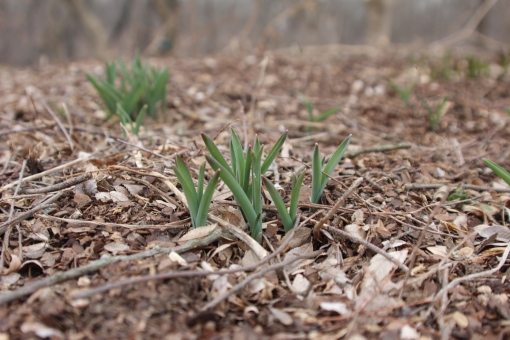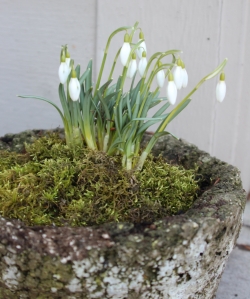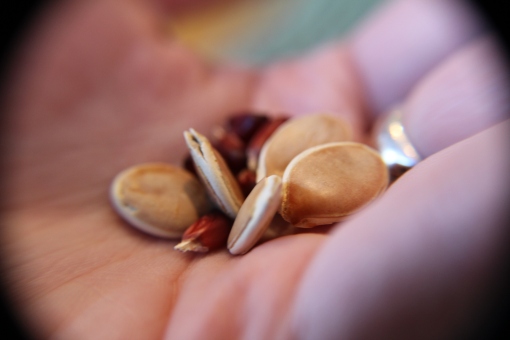 By Debra Knapke
By Debra Knapke
In keeping with the green-theme here is another set of books to consider. From bottom to top:
Rodale’s Illustrated Encyclopedia of Organic Gardening – I still have the original The Basic Book of Organic Gardening edited by Robert Rodale – a dense paperback that was published in 1971 and purchased by me in 1989 for $3.95. The pictured book was published in 2002 and has much of the same down-to-Earth information, but with lots of pictures. We like pictures…
The Natural Way of Farming: The Theory and Practice of Green Farming – This is a book that has become one of the bibles of the sustainable food movement. Parts are poetic; other parts are packed with process-thinking and science. If you are considering growing your own food organically, this book will give you a path to follow.
No Nonsense Vegetable Gardening – now for something on the quirky, but very fun, end of the spectrum… Donna Balzer and Steven Biggs travel through the issues of vegetable gardening with humor. Not everything is cut-and-dry and gardening is not rocket science.
The Green Gardener’s Guide: Simple, Significant Actions to Protect & Preserve Our Planet – Joe Lamp’l offers quick, yet informative, lessons on how to garden and how to work with nature. He stresses that you don’t have to do it all at once, just take one step at a time. Most topics are 2-3 pages long.
Green Guides Crops in Pots: Growing Vegetables, Fruit & Herbs in Pots, Containers & Baskets – For those of you who do not have the acreage for an in-the-ground garden but want to garden, here’s your book. The tips are very helpful and the sound-byte facts are thought-provoking; for example, “Did you Know? North America produces nearly 90 percent of the world’s blueberries.”
Energy-Wise Landscape Design: A New Approach for Your Home and Garden – I do have to take a stand with the word “new”, but the time-honored information is presented in a very attractive and easy to understand format. If you follow the recommendations, you will be saving energy, money and be part of the solution instead of being part of the problem.
And lastly, Green, Greener, Greenest: A Practical Guide to Making Eco-Smart Choices a Part of Your Life – This book goes beyond the garden, proposing options that are at different levels of action; your choice. As I tell my students, there isn’t always a best option, sometimes it boils down to: what is the least-worst?
 Small signs of hope springing up everywhere
Small signs of hope springing up everywhere













